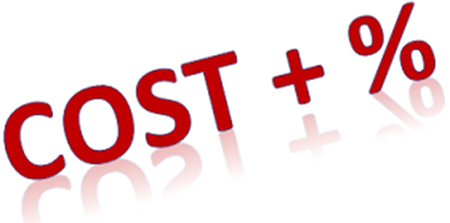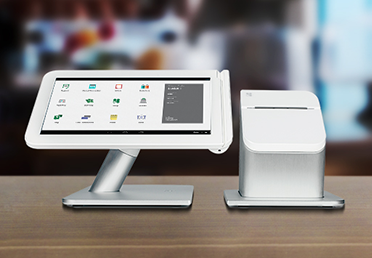Cost Plus Pricing

Get The Best Rates With Cost Plus Pricing
With years of experience in the credit card payment processing market, Canada First understands the impact that interchange rates have on your business’s bottom line. Depending on the size and frequency of your transactions, the cost of interchange rates can mean the difference between an average monthly profit and a sizeable increase in profit.
That’s why we offer the lowest interchange rates on the market.
No special applications. No red tape. Just the guaranteed lowest interchange rates you’ll find anywhere!By offering our merchants Cost Plus Pricing we provide the most cost-effective method of merchant account pricing available.
What Is Cost-Plus Pricing?
Maximize your savings with pricing that offers the ultimate in transparency and fairness. Cost Plus Pricing is a billing method offered by Canada First which passes on the actual interchange cost directly to you when you process a transaction. At the end of the month, we charge you a set rate for our services on your total processed volume.
Cost-plus pricing (also often called interchange-plus pricing) is quite simple. The pricing model consists of two elements: the “cost” or “interchange” and the “plus.” The cost or interchange is the percentage of the transaction that is paid to both the issuing bank and the credit card association. Because your processor has to pay this fee, they pass it on to you. The plus component is the amount over and above the interchange costs that you’ll also have to pay to your processor. It’s their markup for processing your transaction, and it’s designed to cover their costs of doing business – and also to generate a profit.
For example, if a transaction had an interchange and card-brand fee total cost of 1.52%, you would be billed 1.52% for the transaction and 0.20% (for example) for your processor’s service. Your total cost on that transaction would equal 1.72%
How Cost Plus Pricing Differs From Other Pricing Models
Cost Plus Pricing is the most straightforward way of charging for credit card processing – allowing merchants to easily understand how the rates and fees charged apply to their business.
Where other forms of pricing typically charge arbitrary markups, when we set up your merchant account with Cost Plus Pricing, your rates and fees remain fixed regardless of the type of transaction, or the type of card used.
What Will You Pay With Cost – Plus Pricing?
These fees are set directly by the credit card associations, and can be pretty complicated. Basically, there are different rates for debit and credit cards, as well as different rates for different types of credit cards. Whether the transaction is a credit card-present or not-present also influences the rates, as these reflect the level of risk the issuing bank is taking in extending credit for a given transaction. If you want to more information about official interchange rates, this information is available from Visa and MasterCard online.
Here’s an example of how this all works in practice:
You own a retail store and have a merchant account with Canada First. A customer comes in and purchases an item for $100.00 (including tax). She pays with a Visa Consumer credit card. The interchange cost is 1.680% + $0.10, or $1.78. Canada First passes this cost to you, plus they charge a markup of 0.20% + $0.10, or $0.30. Your total cost for taking the credit card is $2.08, or 2.08%.
Why Cost Plus Pricing Is Better
Cost Plus Pricing gives you savings and transparency. Most credit card processors use “Interchange Differential” pricing. With Interchange Differential pricing you are charged a base “qualified” rate and then charged a “non-qualified” fee and an “interchange differential fee” on top of that. The result is that with the Interchange Differential Pricing structure, you, the merchant, are often charged multiple fees for the same transaction – and those fees can add up!
If you’re not signed up with a Cost Plus Pricing structure, your processor will configure the markup for a credit card transaction, taking into consideration a number of variables, chiefly the type of card being used (credit, debit, business, personal), how the card is processed (swiped by a machine, online), and other less common factors. With a Cost Plus Processing rate your markup will remain the same no matter what. These variables will not affect your bottom line.
The benefit of the Cost Plus Pricing model is that by passing the actual interchange cost directly to you and only charging for a single markup, Cost Plus Pricing gives you significant savings while providing you with a very transparent arrangement with your processor. No hidden fees – you will always know exactly what you are being charged, and why.
The accruing savings and clear, consistent pricing for all transactions has made Cost Plus Pricing a favourite pricing model for most merchants. We stand by our rates and are proud to offer the best credit card processing rates on the market today.
Our Rate Guarantee
We guarantee that our Cost+ (%) margin will never increase for the life of your account. While we cannot guarantee the Visa and MasterCard Interchange, merchants can rest assured that our margin will remain the same. Just one of our commitments that helps build long-term relationships with our merchant, without the need for cancelation fees.
Cost Plus FAQs….
What Are Your Rates?
Every organization is different, and our pricing is tailored to your unique business. The best way to determine what you’ll pay is to have a chat with one of our payment advisors for a custom quote.
What Other Fees Do You Charge?
There’s a monthly fee and cross-border (International) fee for foreign cards.. We do not charge any batch, statement, or annual fees that you see with other payment companies.
I’m Currently With Square/Stripe/PayPal/etc., Can You Save Me Money?
Yes – definitely. Our experience is that once a business processes more than $40k in credit card volume, you will actually pay less in fees with Canada First.
How Will Cost Plus Pricing Save Me Money?
The fundamental flaw with the traditional tiered-pricing model is that it hides the interchange costs and allows processing companies to charge more of a markup. By consolidating a wide variety of rates into a smaller number of tiers, processors can essentially “round up” to the highest rate in each tier. While this may make your monthly statement a lot easier to read, it also means you’ll be paying higher rates for a lot of transactions – and you probably won’t be able to tell which transactions are being charged abnormally high rates.
By showing you the actual interchange costs, interchange-plus pricing allows you to more easily see what the markup is. This in turn encourages processors to set more reasonable markups. The credit card processing industry is highly competitive, and processors know that many merchants will sign up with the company that offers them the lowest rates. This transparency in separating out interchange and markup costs generally results in lower overall rates, and most interchange-plus pricing plans will cost you less money than a tiered-pricing plan. However, you should be aware that there’s nothing stopping a processor from charging you an unreasonably high markup. The difference is that it will be a lot easier to spot, especially if you shop around.
What You Get
Scalable Solutions For Every Business
Stress-Free Setup
By Your Side 24/7
Canada First Makes It Easy To Accept:

Let's Work Together
Get in touch and ask us for a quote or ask a question about what solution is best for your business. Call us at 888-616-6967 or click to send an email. We’re here to help.



